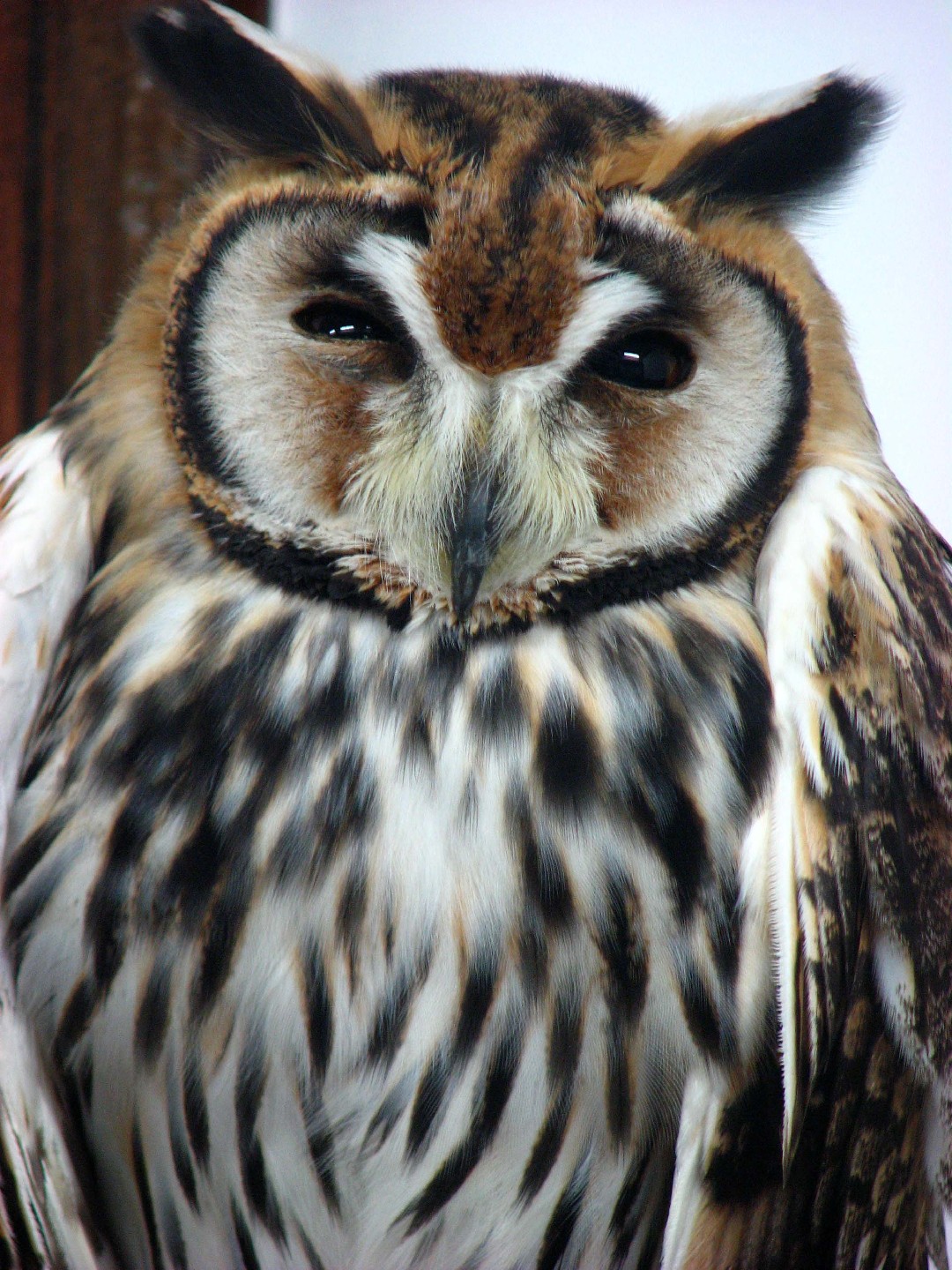Striped Owl
A species of Jamaican Owl Scientific name : Asio clamator Genus : Jamaican Owl
Striped Owl, A species of Jamaican Owl
Botanical name: Asio clamator
Genus: Jamaican Owl
Content
Description General Info
 Photo By Chris Gladis from Kyoto, Japan , used under CC-BY-2.0 /Cropped and compressed from original
Photo By Chris Gladis from Kyoto, Japan , used under CC-BY-2.0 /Cropped and compressed from original Description
The striped owl is a relatively large species with prominent tufts of elongated feathers on the crown resembling ears. It is 30–38 centimetres (12–15 in) long and weighs from 320 to 546 g (11.3 to 19.3 oz). Its head, back, hot wings and tail are brown with black stripes and small markings while its underparts are buff-coloured with heavy black streaking on the breast. The facial disk is pure white with a thin black border. 
Size
38 cm
Life Expectancy
10 years
Nest Placement
Tree
Feeding Habits
Striped Owl, a carnivorous bird, primarily hunts nocturnally, seizing a variety of vertebrates and invertebrates with specialized predatory skills. Striped Owl's diet includes small mammals, insects, and occasionally birds, indicative of opportunistic feeding preferences and adaptations for a diverse prey spectrum.
Habitat
The striped Owl is versatile in its habitat preferences, typically inhabiting regions that offer a mix of open spaces and light woody vegetation. It avoids dense forests, preferring environments such as riparian woodlands, marshes, savannahs, and grassy areas, as well as early successional river island vegetation. The striped Owl also adapts to human-altered landscapes including agricultural fields, plantations, and urban green spaces. Broadly, its range spans tropical rainforests to dry woodlands and grasslands of central regions, reflecting its adaptability to varied environments for roosting and breeding.
Dite type
Carnivorous
General Info
Feeding Habits
Bird food type
Distribution Area
The striped owl is native to much of South and Central America. Its range is not well known, perhaps because it is nocturnal and not easily seen, but it is known from Argentina, Belize, Bolivia, Brazil, Colombia, Costa Rica, Ecuador, El Salvador, French Guiana, Guatemala, Guyana, Honduras, Mexico, Nicaragua, Panama, Paraguay, Peru, Suriname, Trinidad and Tobago, Uruguay and Venezuela. It uses a variety of habitats, including riparian woodlands, marshes, savannahs, grassy open areas, and tropical rainforests. It can be found from sea level to an altitude of 1,600 metres (5,200 ft) and above. 
Species Status
The striped owl has a very large range and its population is believed to be stable. It faces no particular threats and is classified by the IUCN as least concern. 